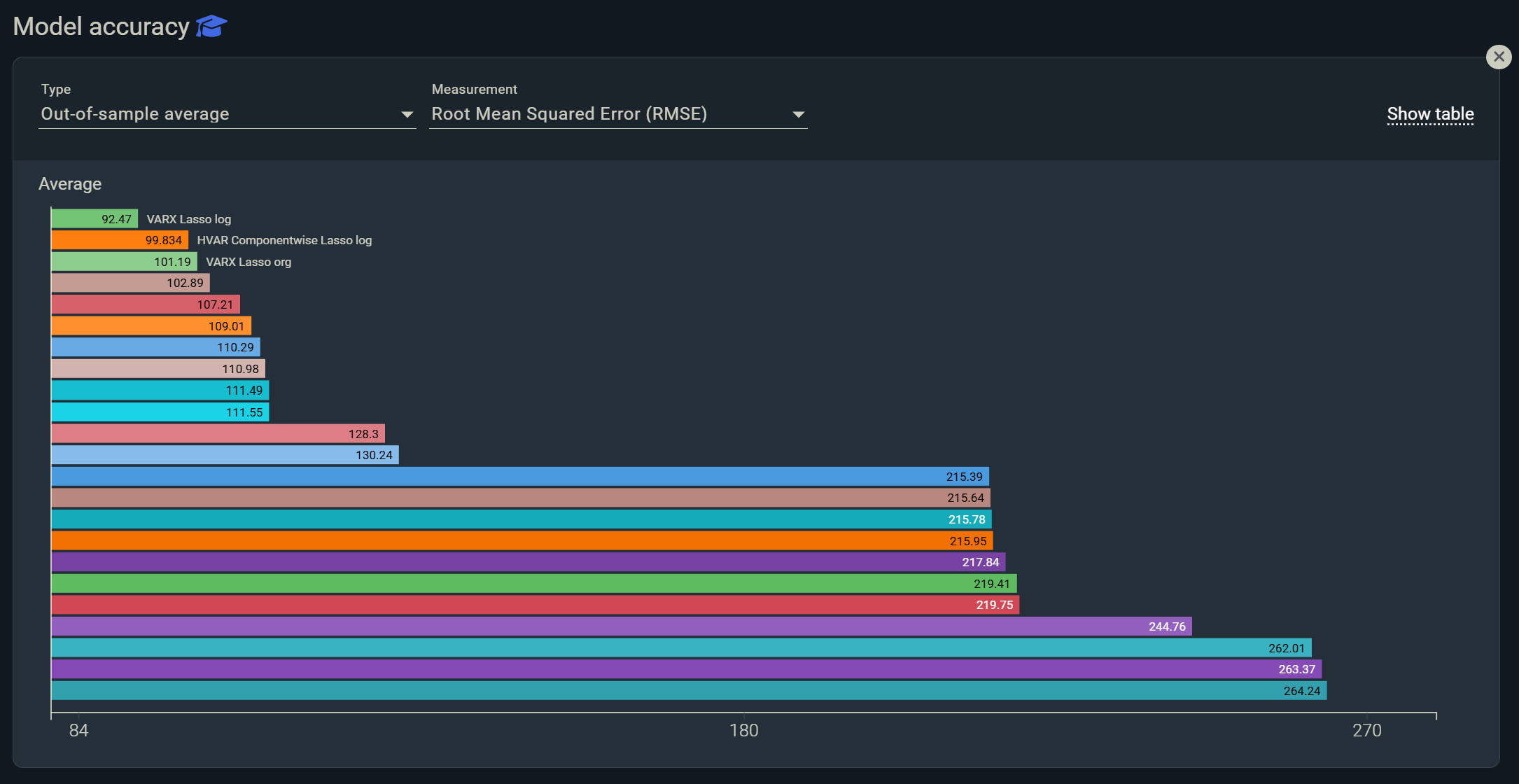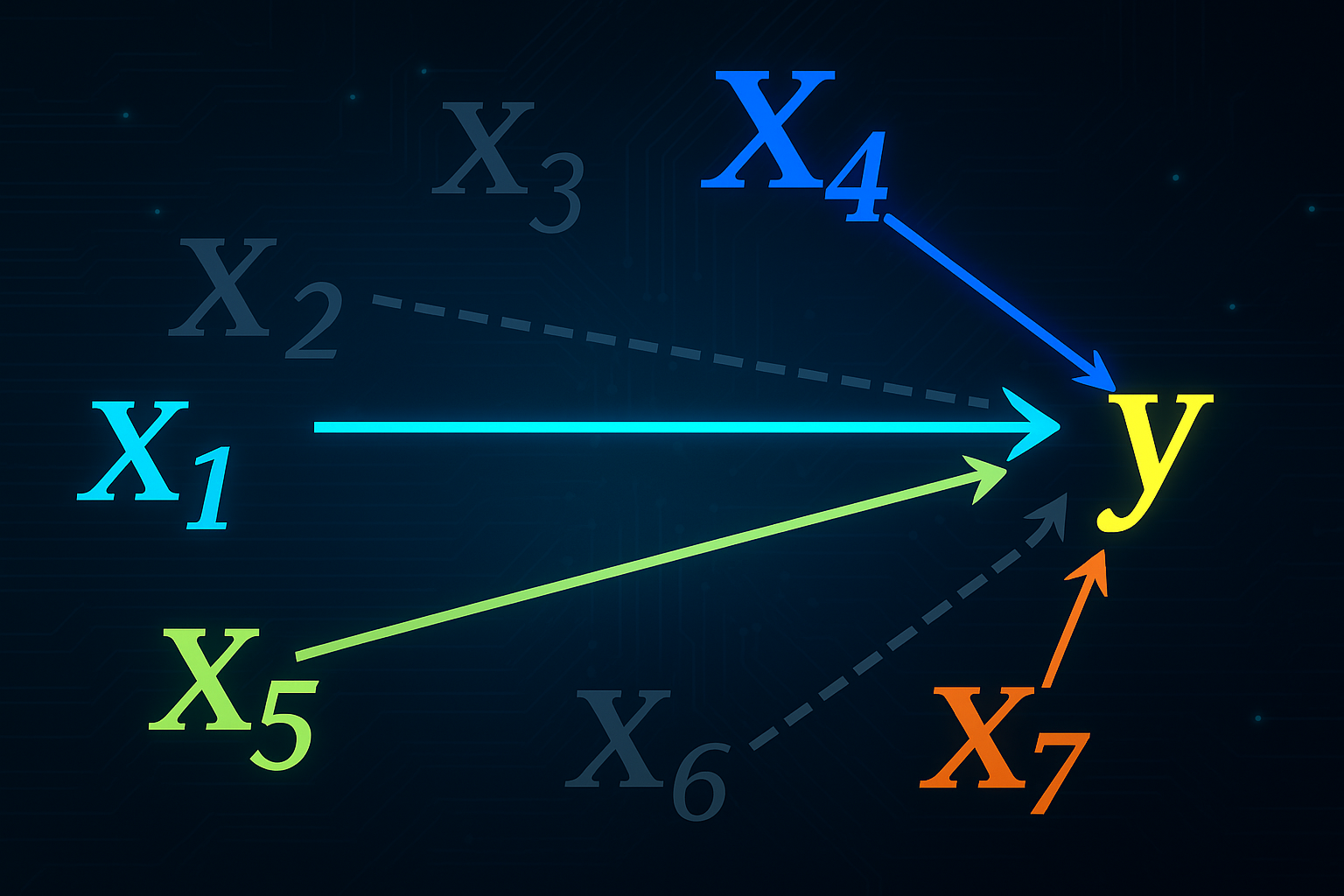If you are evaluating replacements for EViews, you are likely balancing econometric depth, forecasting accuracy, and team productivity. EViews remains a respected environment for time series analysis and simulation with a user friendly interface and mainstream models such as ARIMA, VAR and cointegration testing, which makes it a strong baseline for comparison (S&P Global EViews overview (S&P Global), EViews time series learning page (eviews.com)). Below are the five best alternatives to consider in 2025, ranked for forecasting teams that need accuracy at speed, model transparency, and scalable workflows.
1. Indicio, the no code, automated forecasting platform
Why it is the best EViews alternative: Indicio is purpose built for end to end forecasting at scale, combining a large library of statistical and machine learning models with automation, explainability, and governance friendly reporting. Teams can build and evaluate models in minutes without writing code, then monitor and explain results with SHAP based reports.
Standout capabilities
- Automation and no code modeling: Build and backtest models in a point and click workflow, guided by built in research and automated parameter selection (product site (Indicio), build models feature (Indicio), Macrobond x Indicio factsheet PDF, no coding required (help.macrobond.com)).
- Large model library, statistical and machine learning: Runs advanced econometric and ML models, pools models, and evaluates many alternatives in parallel so you do not get stuck on one specification (features page (Indicio), forecasts gallery showing models evaluated (Indicio), roles for analysts with model list (Indicio)).
- Speed at scale: Designed to test many variables, models, and parameters quickly, with guidance on parallel evaluation considerations for high performance forecasting backends (build vs buy whitepaper (Indicio)).
- Forecasting governance and explainability: Built in SHAP based explanations and reporting increase stakeholder trust and auditability (Explainable Forecasting (Indicio)).
- Variable selection and leading indicators: Automated search and ranking of exogenous drivers to avoid look ahead bias and improve robustness (variable selection feature (Indicio), whitepaper on indicator selection (Indicio)).
- Scenario analysis and what ifs: Set future paths for drivers to simulate alternative futures with side by side baselines (scenario analysis (Indicio)).
- Ensemble and model weighting: Combine models with performance based weights for accuracy gains (Macrobond factsheet PDF (help.macrobond.com)).
Best for: Forecasting teams that want fast, leakage safe model search, explainable results, and a governed, repeatable workflow without writing code.
2. Stata, enterprise econometrics with deep time series tools
Stata offers a comprehensive time series suite covering ARIMA, VAR and VEC models, volatility modeling, unit root and cointegration testing, filtering, forecasting and graphics, all within a consistent UI and scripting language (Stata time series features (stata.com)). It is a strong EViews peer for academic grade econometrics and enterprise deployment.
Best for: Econometricians standardizing on Stata syntax who need robust estimators and reproducible do files across teams.
3. R ecosystem, open source breadth with production grade forecasting
R provides a vast ecosystem for forecasting and econometrics. Modern workflows often use the fable framework for ARIMA, ETS and multivariate models with tidy evaluation and model combinations (fable docs (fable.tidyverts.org), CRAN fable page (cran.r-project.org)). Beyond fable, CRAN Task Views catalog hundreds of time series and econometric packages, from state space and GARCH to hierarchical and high frequency analysis (CRAN Time Series Task View (cran.r-project.org), CRAN Econometrics Task View (cran.r-project.org)).
Best for: Teams comfortable with code who want maximum methodological breadth, community support, and flexible pipelines.
4. MATLAB Econometrics Toolbox, state space and simulation first
MathWorks’ Econometrics Toolbox provides ARIMA, state space, switching regimes, GARCH, VAR and VEC models with Bayesian tools, Kalman filtering, missing data handling and simulation utilities, all integrated with MATLAB’s matrix environment (toolbox documentation (mathworks.com), product page highlights (se.mathworks.com)).
Best for: Quant teams already in MATLAB needing advanced state space modeling, simulation, and tight integration with engineering workflows.
5. OxMetrics, modular econometrics with PcGive, STAMP and G@RCH
OxMetrics is a long standing econometrics platform with modules for dynamic models and model selection in PcGive, structural time series in STAMP, and volatility modeling in G@RCH, plus rich visualization and data handling (PcGive docs (Doornik), overview of OxMetrics modules (Wikipedia), vendor overview (aniacademic.com)).
Best for: Methodologically rigorous teams who value Hendry Doornik style workflows, Autometrics, and specialized time series modules.
How to choose the right EViews alternative
- If you need faster, governed forecasting with explainability: choose Indicio for automated model search, ensemble weighting, SHAP based transparency, and scenario analysis in a no code UI (Indicio features (Indicio), Explainable Forecasting (Indicio)).
- If your team already scripts in a specific ecosystem: Stata, R or MATLAB minimize switching costs while matching or exceeding EViews’ model coverage (Stata time series (stata.com), CRAN Task Views (cran.r-project.org), Econometrics Toolbox (mathworks.com)).
- If you want modular, classic econometrics tooling: OxMetrics delivers PcGive, STAMP and G@RCH in one suite (PcGive docs (Doornik)).
Bottom line
EViews remains a capable baseline. If your priority is governed accuracy gains at speed with minimal engineering, Indicio is the most complete replacement because it automates model building, selects and explains drivers, runs scenario analysis, and combines models into ensembles, all without code, which shortens time to value for forecasting teams (Indicio homepage (Indicio), variable selection (Indicio), scenario analysis (Indicio), ensemble weighting PDF (help.macrobond.com)).



